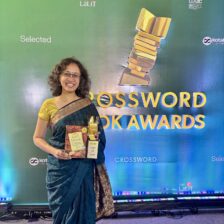Sometimes, I wonder whether secretly, I conduct creative writing workshops more to inspire myself than to inspire the children I work with. Whatever it is, I do know that I enjoy myself tremendously whenever I teach creative writing. I feed off the enthusiasm of the children and I come home ready to write, which is invigorating.

Children and Writing
Many children love to write. I was one of them, and I wrote all kinds of things, mainly inspired by what I read. I wrote about magic and school, and things that I thought would be moving – like earnest poetry about war and poverty. Writing is fun; it may even be good. But when publishing is so easy, I find that many parents and teachers think everything that children write is perfect. I don’t always agree. Here are my pet peeves:
Forced rhyme
I suddenly have a lot of money
I think I'll go to the store and buy a jar of honey.
Oh, isn't it funny?
My favourite pet is a bunny!
You get the picture. Rhyme without meter, plus rhyme that compromises meaning. Many children write poetry that rhymes but does not really make sense.
A Dream
The plot gets complicated, convoluted, textured, rich … And it was all a dream.
This is the most annoying and the most common of all, with children and adults. Why do we do it? Because that’s the easiest way to end the story, right?
No Story
I woke up in the morning. Then, I brushed my teeth. Then, I went to school, but my best friend was absent. I was so sad! But I had so much fun in class that I forgot she was absent. When I went home, I said, "Oh, my best friend was absent. I missed her so much!"
There are various forms that this story takes, prime among them being the endless ‘and then this happened, and then this happened and then this happened’.
Agenda
I know that everyone won’t agree with me here, but one thing that gets to me is the moral of the story, explicitly written out. Everything ends with a moral. Often, the moral is completely unrelated to the story.
Creative Writing Workshops
Through creative writing workshops and of course through my Writers’ Club, we work on these ideas. At the beginning of each year, I ask the children to answer three questions:
- Why do I write?
- What do I want the reader to feel when I write?
- What do I need to do to keep the interest of the reader?
This is a great starting point, I find. And from there, we come to other activities.
Fortunately, Unfortunately
I’ve written earlier about Fortunately-Unfortunately – the game and the book. I came across the activity through a wonderful resource book, Creating Stories with Children.
I cannot recommend this book enough; it’s a treasure trove of activities.
After I started conducting this activity during workshops, I came across Michael Foreman’s brilliant picture book with the same name. It’s a delightful book, which works with children of all ages, depending on how you choose to read it out.
On Goodreads, I also came across another book called Fortunately by Remy Charlip. I haven’t read this one, but if all the reviews are anything to go by, it’s a promising book that would work just as well.
Writing a letter
Very often, I conduct workshops at libraries, where letter-writing in this way works beautifully. I begin with a story of my own, from The Story-Catcher. Here’s a reading-cum-telling of the story.
I then ask the children to write letters of their own, which they quietly put into their favourite book in the library. If the librarian is enthusiastic enough, I ask her/him to keep the letters going. Other readers respond; the act of writing goes wonderfully with the joy of discovery.
Here are a few links to how it has worked in the past:
- An activity conducted by a colleague based on “The Dictionary”
- The Story-Station
- The Writers’ Club at St. Mary’s
Poetry
With older children, I like to open up the understanding of poetry with a video like this one.
Who doesn’t love freebies? To work with poetry, I absolutely love Shel Silverstein’s website. It’s full of printables that you can use with his poetry. Especially to tackle the problem of forced rhyme, I introduce children to different forms of poetry. Explore his website to find activities to print and use.
That’s just a handful of ideas; what would you add?




Leave a Reply